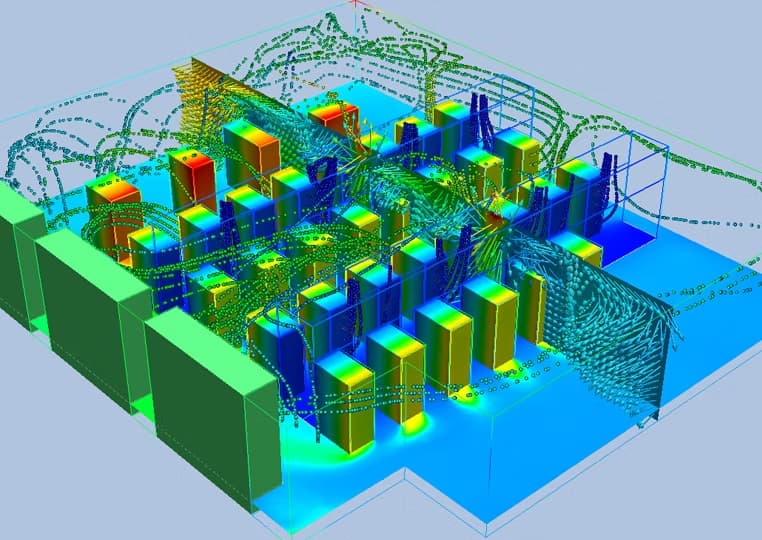Hyperscale End-user Temperature & Airflow Performance Modelling

Brief
Our client, a state-of-the-art data centre provider, has carefully evolved its data centres to reduce the need for excess plant and equipment – cleverly keeping build, operational and maintenance costs to a minimum.
Their hyperscale end-user wanted added reassurance that this lean data centre design would be able to maintain strict environmental requirements to their critical equipment even during severe power and plant failure scenarios. They wanted this reassurance before construction was complete and any testing could take place.
To provide that reassurance VIPA Digital was engaged to predict the temperature & airflow performance of the datacentre and report accordingly the data centre’s rate of temperature rises and fall as the cooling system loses and recovers power.
Approach
A 3D computer model was initially produced to represent the data hall. Computational Fluid Dynamic (CFD) technology was then used with that model to simulate the environmental dynamics within the data hall. The outputs provided an accurate insight into the anticipated temperature and airflows that would occur in the data centre during normal operation, and then in the failure scenarios in question.
Collaborative Approach
A novel partnership with Future Facilities Ltd. (producer of cutting-edge data centre simulation software) maximised the expertise on the project. VIPA Digital communicated data centre designs and challenged modelling decisions to Future Facilities. Future Facilities built the models and ran the calculations, together we interpreted the results and finally VIPA Digital wrote and delivered the report. The approach brought together expertise from multiple organisations to deliver a successful project together.
Delivery
VIPA Digital’s expert analysis, reporting and workshops ensured that the findings were delivered in a clear and easily interpreted manner. Advice was provided with options for upgrade in the broader context of holistic data centre design and operation.
The study concluded that the data centre remained within ASHRAE’s recommended range even during power outages, but also showed how optional upgrades could maintain even tighter thermal thresholds if further investments were made.
The customer has subsequently returned for similar analysis to be carried out for future phases of the project, demonstrating its value.